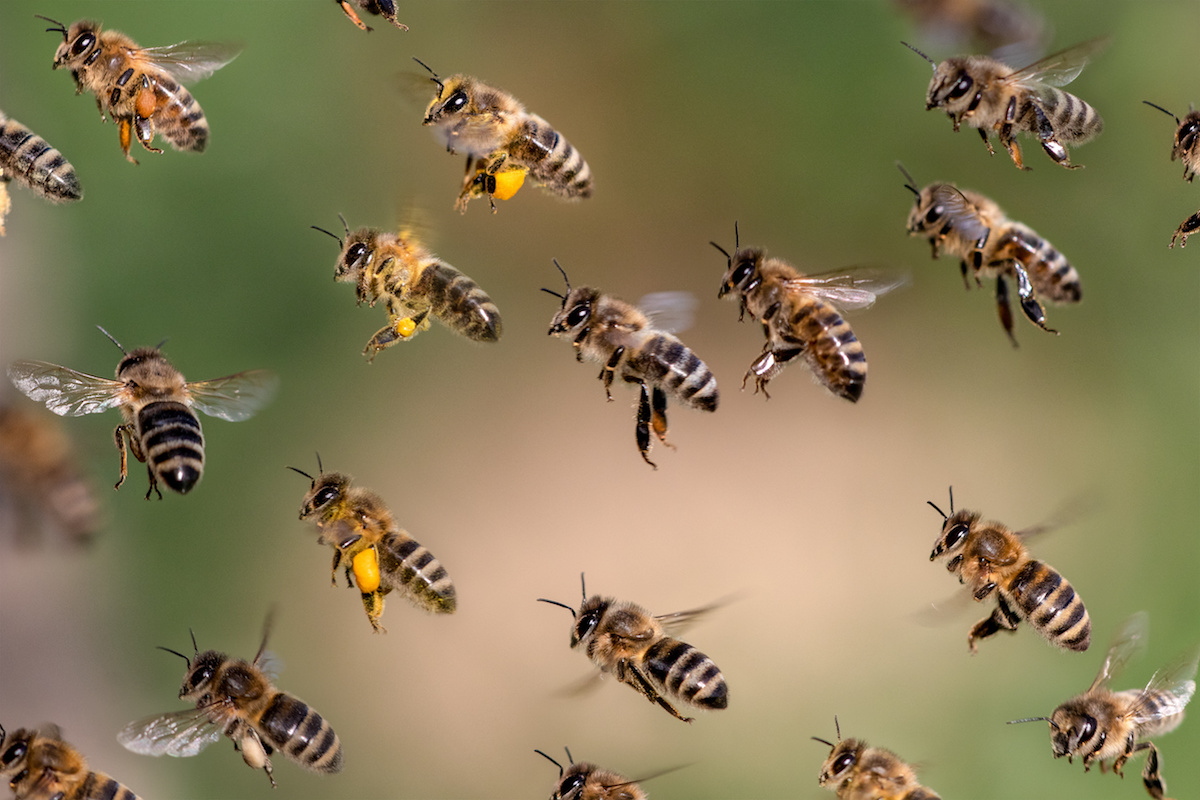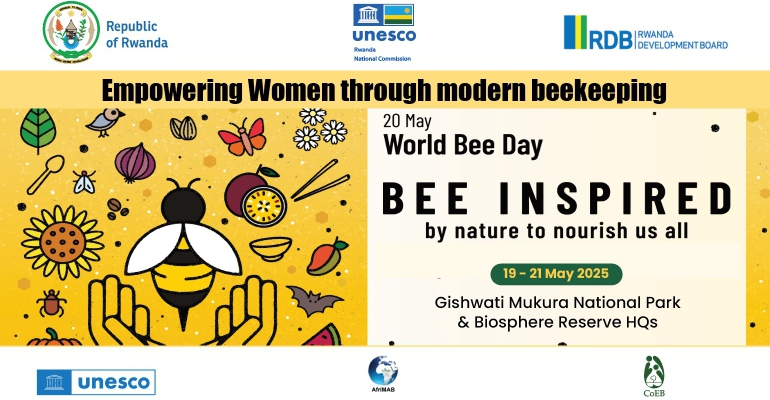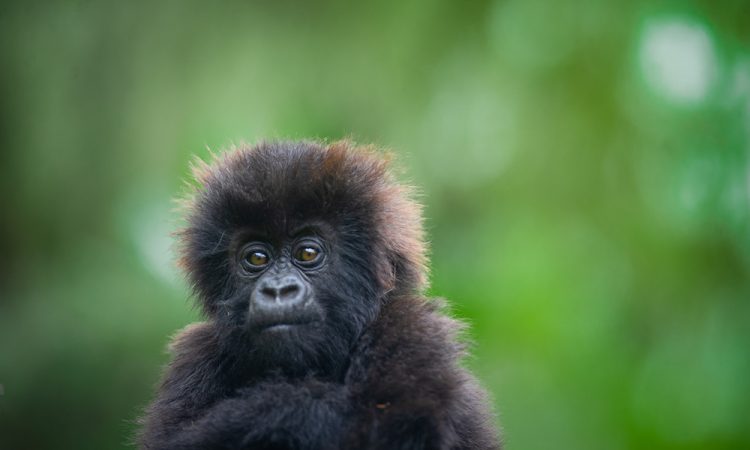
Insects known as inigwahabiri(in Kinyarwanda), particularly bees, have an impressively organized system that mirrors human societies in terms of assigning duties and loyalty to leadership.
Like humans, they divide roles to achieve their collective goals and show remarkable allegiance to their leader—the queen bee—according to insights from local beekeepers.
A Glimpse into Bee Society in Rwanda
Alarmnews spoke with Medard Ndashyikirwa, a beekeeper in Gahara Sector, Kirehe District, who explained the intricate structure and life of a beehive, governed by the queen and shaped by specialized roles among its members.
According to Melanie Roffet-Salque, author of “Widespread Exploitation of the Honeybee by Early Neolithic Farmers,” the earliest known beekeepers may have lived in Spain as she cites cave art from Cuevas de la Arana discovered there in about 10,000 years ago, depicting a person descending into a beehive to collect honey.
Locally, beekeeper Medard shares a Rwandan folk tale of how honey was “discovered”: a hunter speared a tree and accidentally struck a beehive. Chased by angry bees, he fled, only to notice honey dripping from his spear. Tasting it, he found it delicious and shared the discovery with others—marking the beginning of honey harvesting in the region.
The Queen Bee and the Hive Hierarchy
Medard explains that the queen bee is the mother of the entire hive and the foundation of its social order. Her main role is reproduction—she can lay up to 2,000 eggs per day. She mates midair with male bees called drones—usually about ten of them. The mating ritual happens during flight; each drone that mates with the queen dies immediately afterward.
After mating, the queen returns to the hive with enough sperm to fertilize eggs for life. The bees that didn’t mate return with her, while the successful drones perish.
Bees then begin preparing for the next queen by identifying specific fertilized eggs and feeding the chosen larvae a special substance called royal jelly—a secretion from worker bees’ glands.
This nutrient-rich jelly transforms an ordinary larva into a queen, developing her into a larger, more robust bee with a longer abdomen, short wings, and a shiny appearance—distinct from all other bees.
Life Stages and Division of Labor
Once the queen lays between 60,000 and 100,000 bees, the hive becomes crowded. The colony prepares to split (a process called swarming), during which a new queen is nurtured, and part of the colony leaves with her to form a new hive.
Meanwhile, as bees hatch:
Only the queen and a limited number of males (up to 1,000) become reproductive.
The rest are female worker bees that begin their duties just three days after birth.
Their labor is structured by age:
1. Days 1–2: Rest.
2. Days 3–8: Feed the queen and young larvae, clean the hive.
3. Days 9–13: Build honeycombs and seal completed cells using beeswax.
4. Days 14–21: Act as guards of the hive and regulate internal climate using their wings to circulate air.
5. From Day 22 onward: Venture outside to collect nectar, water, pollen (their food), and resin used to seal unwanted hive openings.
Honey Production and Business
Medard owns 100 beehives in Gahara, 60 of which are active producers. Annually, they yield 2.5 tons of honey, which he sells at 5,000 Rwandan francs (Frw) per kilogram—earning him over 1.041 million Frw monthly from honey alone. Importantly, beekeeping does not prevent him from pursuing other income-generating activities.
The honey season in Rwanda’s Eastern Province runs mainly from January to March. During this period, a single hive can produce 8–10 kilograms of honey every 10 days. It’s also the time when bees are most likely to swarm and create new colonies.
To manage this, beekeepers either encourage swarming by providing an empty hive to host the departing colony, or prevent swarming by removing the cell that could raise a new queen—ensuring continuous honey production from the existing colony.
Promoting Beekeeping in Rwanda

Medard shared his insights during an interview with Alarmnews on World Bee Day (May 20), while visiting fellow beekeepers in Rutsiro District, near the Gishwati-Mukura Forest Reserve.
Engineer Dominique Mvunabandi, Director of Science, Technology, and Innovation at CNRU (the Rwanda National Commission for UNESCO), emphasizes that any willing Rwandan can become a beekeeper.
He encourages residents living near forests or protected areas to engage in beekeeping—especially where no pesticides are used, such as around Gishwati-Mukura, Nyungwe, Volcanoes National Park, and Akagera.
“Beekeeping is accessible to everyone,” he says. “People living near national parks have a unique opportunity. Bees roam freely from those areas, and with the right knowledge and investment, locals can turn that advantage into income. It’s a simple but rewarding profession.”
A Sustainable Opportunity
CNRU, in partnership with UNESCO, urges beekeepers near national parks to attract tourists, offer honey-harvesting experiences, and invest in the honey trade. Honey can also be mixed with local products like milk, tea, or coffee as a healthier alternative to sugar—benefiting both public health and local economies.
By Simon K Mugabo







